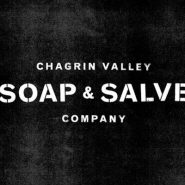How should software ERP be selected?
After the decision to adopt an ERP system is made, the most critical process is how to select a software ERP. The right software ERP can be a source of significant business leverage whereas the wrong one will only add to your business woes.
Recommendations of Software Advice
Following are the key steps that www.softwareadvice.com recommends that must be part of your selection process:
Understanding
First you need to understand the bare minimum capability that you want this solution to have. You would need to involve the leadership and key stakeholders in all relevant processes. One must be able to identify the problems that it must eliminate, your timelines and your budget. Create a comprehensive selection criterion to evaluate the solutions.
Research and Presentation
It is important to do thorough secondary research of the ERP market for better understanding. You need to understand the technologies, deployment models and the functionalities that are offered by vendors. Examine cost burdens, implementation times, accessibility models that are part of the solution. If need be, you may present your case to the management for approval. For an approval by them a detailed ROI estimate may be required. The presentation should cover all factors like software licenses, service, training and the changeover costs.
Create a shortlist
Next we need to create a shortlist of software ERP’s that match our requirements. Start with a long list of products and then eliminate solutions that don’t meet the criteria. Next, request pricing estimates to eliminate systems beyond your budget. Once you have a short list, engage those software vendors in the sales process. This shortlist should be tweaked. The criteria: affordability, functionality, features, relevance to business vertical, compliance fit, customer feedback and ratings from secondary research, technology fit, deployment model, accessibility needs, customer support and the ease of implementation.
Understanding & Interaction
As you interact with the shortlisted vendors, state your requirements upfront and ask for referral customers in a similar business domain. Ask them for live demonstrations of their products that address your needs. You must educate the sales personnel of the vendor about how you will evaluate the product, your expectations from them, and the selection process. This will help them in presenting the relevant features and benefits of their solution to you in better manner for a possible match.
Live Demos
It is important to evaluate the live demonstration properly providing each vendor with a few “demo scripts” to detail specific workflows that you want to see. This is essential to be in control of the demo process. Be sure to include the right stakeholders from your organization in the demo. During the demo, keep track of your impressions and compare notes with colleagues afterwards. After going through the live demos, your team of cross functional decision makers should score and rank the solutions based on your selection criteria. To make up your mind, ask for deep-dive demos from them to understand the solutions better.
Comparing key points
Gather and compare price quotes that include license fees, subscriptions, maintenance costs, customization/support/training and all other hidden costs. You may want to add features and functionality provided in the comparison with customer feedback and expert ratings. It might be a good idea to examine the intellectual capital and relevant experience behind the product design. It is good to consider the quality of security standards followed and the infrastructure and environment backing the solution.
Referrals and agreement study
You should now ask the vendor for referrals that must be approached in a detailed manner to understand the quality and delivery of the solution and the customer experience of dealing with them. You could ask the vendor for providing reports about their financial and strategic viability for the future. Review the agreement and negotiate in for win-win terms & conditions. Ask for liability clauses if the vendor does not perform their part, the unstated & implied responsibilities, the pricing validity, support guarantees & assurance for service.
If the solution ticks all the relevant boxes, it may be time to make a decision and sign on the dotted line.
The Cloud ERP
The cloud takes ERP to a whole new level with the ability to do business anytime, anywhere, and from any device with internet access.
The cloud is already the preferred choice for a software ERP due to its affordability, easy access, lower financial costs as well as minimal set up times.
Why Versa Cloud ERP
We at Versa have created a multi award winning secure cloud based comprehensive ERP solution. It addresses key issues of the small business domain in the most effective manner possible.
Our solution is designed for fast growing businesses, between $1-$50M in annual revenue, looking to upgrade business management solutions. It is capable, affordable and easy to use by small and mid-sized businesses.
There are customization options with easy migration from and compatibility with respect to other systems preexisting or in the business environment.
SMB’s can optimize operations across multiple companies, countries, and currencies with one integrated ERP system.
To know more, please visit www.versaclouderp.com or contact us directly.
We’d love to hear from you.
Reference and further reading: Software Advice’s best practices guide- Ten steps to selecting the right ERP software


